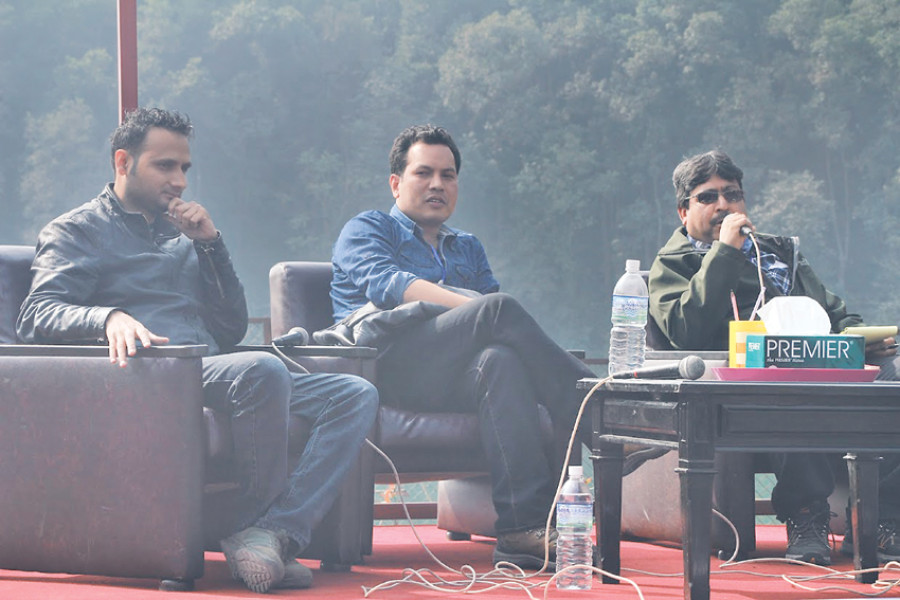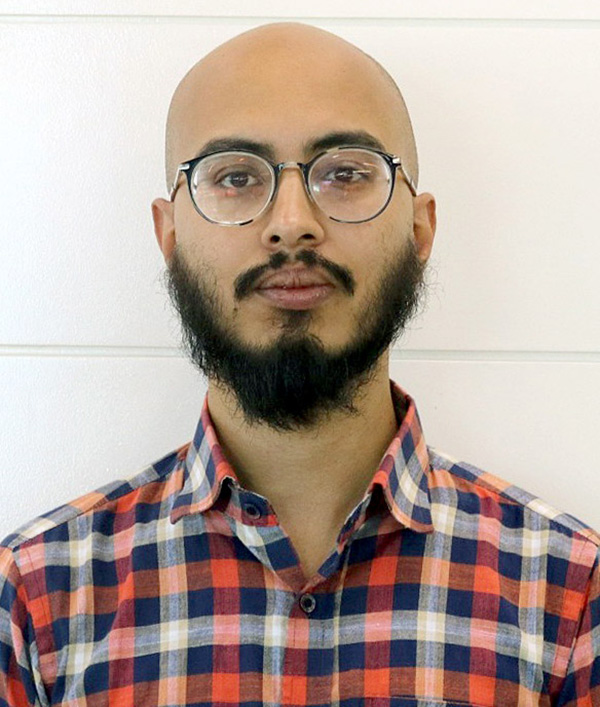Miscellaneous
Post-festival dispatch
The Nepal Literature Festival 2016 was an illuminating and ultimately humbling experience for this scribe
Pranaya SJB Rana
Pokhara is warmer than Kathmandu at this time of winter. On clear days, the noon sun beats down like a torrent and the Phewa lake reflects light like a mirror. In the mornings, hawks and eagles soar and circle while in the afternoons and evenings, flocks of ducks migrate in a tight skein. Underneath, for four days, writers, intellectuals, journalists, politicians and actors held a conclave, in the form of the Nepal Literature Festival.
The four days were a flurry of activity, with parallel sessions exploring myriad topics in literature, the arts and politics. Khagendra Sangraula and Sharachhandra Wasti deliberated on the Nepali language, with the former declaring that language can only be as beautiful as the idea that inspires it, citing the first line of Anna Karenina as proof.
On a discussion entitled ‘Samajik Yatharthabad ko Hangover’ (Social Realism’s Hangover), the ‘surrealist’ writer Kumar Nagarkoti dismissed all schools of thought, instead asking that writers gaze upon the corpus of literature that is before them and find the missing piece.
The effusive Buddhisagar reiterated as much during a session on characters with Nayan Raj Pandey and Subin Bhattarai, prodded along smartly by Narayan Wagle, when he deferred to Toni Morrison who said that writers should write the kind of books they want to read.
On an hour-long rambling but riveting talk on the principal characters of the Mahabharat, the veteran politician Pradip Giri spoke at length on the complex iconoclastic characterisation of Draupadi (with asides to Sita from the Ramayan). There were lighter moments too, as when Rajesh Hamal read out two children’s books (by Bandana Tulachan and Ubahang Nembang) to a crowd of eager schoolchildren, or when Rekha Thapa, flanked by Richa Sharma and Gauri Malla, declared that all of Nepal was reflected in her visage.
Behind the scenes, at the after-party and on the bus from venue to venue, the erudite Dalit activist Aahuti and the brilliant poet Upendra Subba were declared the stars of the festival; the former for his encyclopaedic oration and the latter for this rousing recitation of Bhedetar ko Picnic.
I too was on two panels—one with Thomas Bell on the city of Kathmandu as literary fodder, with Rabi Thapa as the moderator, and another on Nepali writing in English with Prawin Adhikari and Rabi Thapa, Saguna Shah moderating. In the second session, we were asked an intriguing question, regarding why Nepalis writing in English seemed not to mix and mingle with writers in Nepali and whether it was a deliberate choice to remain aloof. My answer was that of course it wasn’t deliberate; it is intimidating to approach and hold conversations with people whom you look up to and admire.
Though not my first time attending the festival, I had never actually been acquainted with these titans of the Nepali literary landscape. I have been a reader longer than a writer and I had my own images of these authors —from reading Nayan Raj Pandey’s Ular, Yug Pathak’s Urgen ko Ghoda, Narayan Wagle’s Palpasa Cafe, Buddhisagar’s Karnali Blues, Shrawan Mukarung’s Bise Nagarchi ko Bayan, Kumar Nagarkoti’s Fossil, Amar Nyaupane’s Seto Dharti, Manu Manjil’s Lamppost Bata Khaseko Jun and Khagendra Sangraula’s acerbic columns.
So in the four or so days at the festival, I lurked among these writers, listening in on conversations over copious glasses of whiskey and amid clouds of cigarette smoke. I came away awed. The dividing line between the writer and his work seemed blurry at best. There was the easy languid prose of Karnali Blues in the ready wit and humour of Buddhisagar; the famously sharp critical ear of Khagendra Sangraula in every comment he made during the Q&A sessions and afterwards; the candid honesty of Narayan Wagle; the imposing and eclectic character of Kumar Nagarkoti; and the affability and lyricism of his poetry in Manu Manjil’s personality.
“This is exactly what we hoped to achieve,” says Robin Giri, part of the organising team behind the festival. “We wanted to provide a forum for writers to meet each other and talk among themselves, spend some time together and share ideas.”
It is a heady experience, to be surrounded by so many writers whose work you’ve read and admired. I imagine my naiveté is showing and that this is no big deal to most. But as someone who came late to Nepali literature and who is only beginning to find my own place as a Nepali writer in the English language, it was both humbling and inspiring.
To come back to Saguna Shah’s question and answer it at length, there is, no doubt, a difference in medium and difference in thought. But there is no reason writers writing in English should not commingle with those who write in Nepali. In fact, it is very necessary. Of course, people have their own preferences and their own friends and cliques. That’s not a writer thing, it’s a human thing. But some overlap is required as that could breed more varied, much more interesting work. Of course, there are fewer of us writing in English, but it seems we have yet to achieve the intricacies that Nepali literature has cultivated and advanced.
As writers in English, we must locate ourselves on the grand scale of world literature in English, but as Nepali writers, we must also attempt to carve a space for ourselves on the spectrum of Nepali literature.




 6.12°C Kathmandu
6.12°C Kathmandu










